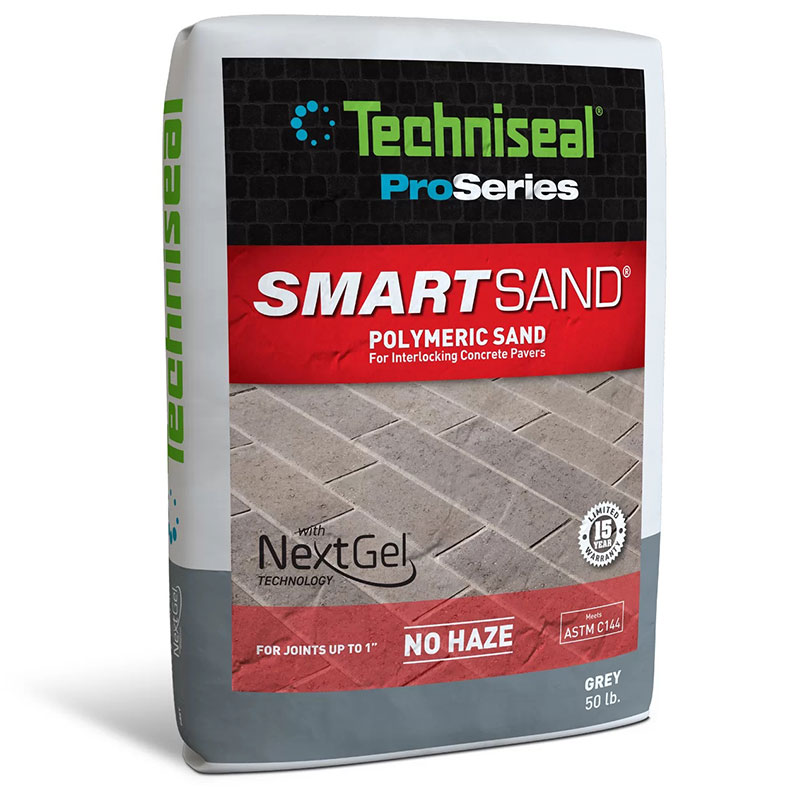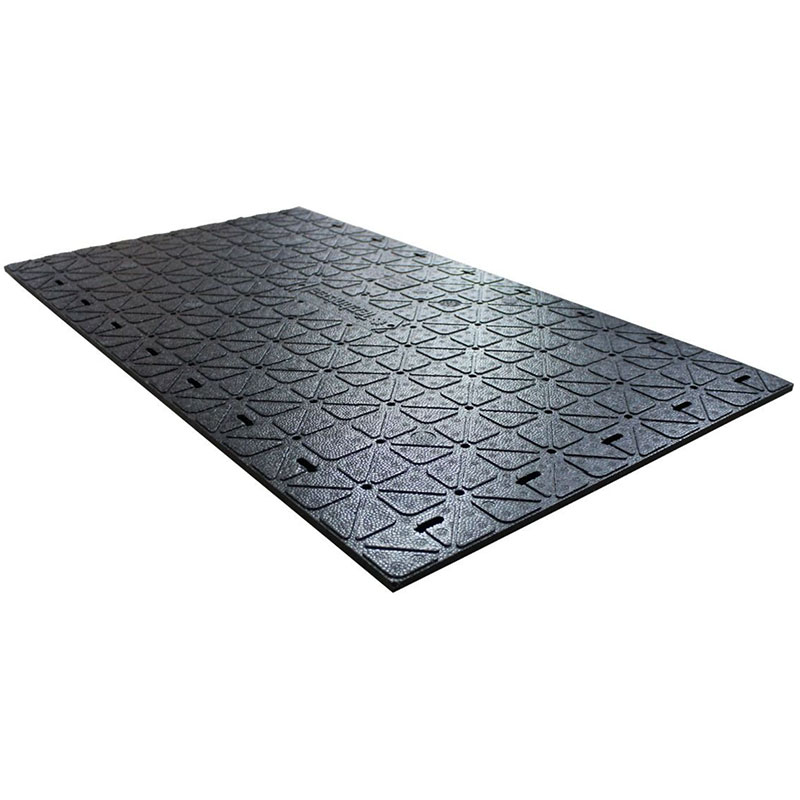☎: (877) 937-2838
Techniseal ProSeries HP NextGel Polymeric Sand
- DESCRIPTION
- DETAILS
- PATTERNS
- ATTACHMENTS
- REVIEWS
- Q&A
- RELATED PRODUCTS
NO HAZE • NO DUST • SAVE TIME • SAVE LABOUR • RAPID SET
HP NextGel™ is the only true high-performance jointing sand on the market. Often imitated, the superior HP formula remains unsurpassed, both in terms of performance and ease of installation. Avoid pale imitations, always go for the original!
Techniseal® HP NextGel™ Jointing Sand is a state-of-the-art mix of graded sand (ASTM-C144) and binder that flows smoothly down joints for a fast and effective installation of pavers or slabs with false, narrow or wide joints. It is also recommended for surfaces exposed to heavy traffic, and for high-humidity areas. Easy to use, NextGel™ Jointing Sand starts to set only a few minutes after being activated with water, and quickly becomes resistant to water erosion (rain, splashes, sprinklers, etc.). NextGel™ Jointing sand offers great resistance to weed growth, insect invasion, and erosion.
Techniseal® HP NextGel™ Jointing Sand has been manufactured with a revolutionary technology called NextGel™. NextGel™ radically transforms and improves the properties and behavior of jointing sand, resulting in the first ever true “no dust”, “no haze” and “no waste” jointing sand for a fast, clean, durable and profitable installation.
- Minimum joint width: 1/16”
- Maximum joint width: 4”
- Minimum joint depth: 1.5”*
*For installation on porcelain tiles that are less than 1.5” thick, fill up joints completely.
Techniseal ProSeries HP NextGel Features :
- No Dust
- Easy Sweep - NO HAZE!
- Fast wetting
- Optimal strength
- Deters ants and other insects
- Inhibits weed growth
- Eliminates joint erosion – water, frost heaving, wind, power washing, etc.
- Fast Rain Resistance - Water-resistant after 60 minutes
- Stabilizes pavers – Strengthens interlocking
Techniseal ProSeries HP NextGel Application & Instruction:
- For residential, commercial, industrial and public projects where mechanical compaction is possible and/or mandatory.
- Ideal for concrete, wet-cast, textured or clay pavers and porcelain tiles (only if mechanical compaction is possible).
- For false joints.
- Ideal for joints 1/16” - 4” wide. HP Nextgel is always the industry’s leading product for the stabilization of concrete pavers & slabs.
For wide joints and for all “NO COMPACTION” installations, you can now rely on Techniseal NOCO - For high-humidity areas, pool decks, heavy-sloped and high-traffic areas.
- Concrete pavers, wet-cast pavers, natural stone, textured or clay pavers and porcelain tiles.
Please Note :
- Bedding must be made of 3/16” dense graded sand. Install over a drainage base and bed (sand-set) as per ICPI recommendations.
- Temperature must be above 32°F for 48 hours following installation.
- Surface and joints must be dry.
- Sprinkler system must be turned off.
- Product must be tested on a small area to insure that texture and color meet expectations.
- Wear appropriate safety gears.
- Do not use this product as capping sand.
- Do not mix product with cement, sand or any other material.
- Wait 30 days after installation before cleaning and sealing pavers.
- Not for use on submerged or constantly wet surfaces.
- Joints become soft when humid but become hard again when dry.
- Because product comes from a natural source, color and grain size may vary.
- This product starts repelling water only a few minutes after initial wetting - wet no more than 200 sq. ft. of surface at a time.
- Do not sweep product over asphalt.
Frequently Bought Together :





Smartsand
Polymeric SandNOCO
Polymeric JointNOCO Storm
Jointing CompoundDriBond
Screed ToolEZ Base
Panel SystemTechniseal ProSeries HP NextGel Overview Video :
Brand Techniseal Specifications Surface type :
- Natural Stone
- Concrete Paver
- Concrete Slab
- Interlocking Paver
- Porcelain Tile
- Wet Cast Paver
Coverage :- For a 50 lb. bag : Narrow joints: 60 to 120 sq. ft. Wide joints: 25 to 40 sq. ft.
- Coverage power depends on paver type and joint width.
Packaging :PRODUCTS Color RETAIL SIZE UNITS PER
PALLETHP NextGel Black 50 lb (bag) 56 HP NextGel Grey 50 lb (bag) 56 HP NextGel Ivory 50 lb (bag) 56 HP NextGel Tan 50 lb (bag) 56 Questions and Answers Q. What is Polymeric Sand ? A. Polymeric sand is a mixture of fine sands and small additive particles called "polymers". It is used to obtain firm and durable joints when installing pavement materials such as concrete pavers and slabs, natural stone, and porcelain tiles. Q. In jointing sands, what are polymers and what purpose do they serve ? A. Polymers are small additive particles that are mixed with sand grains during the manufacturing of polymeric jointing sand. When exposed to water or moisture, these are activated and act as a powerful binding agent that provides firm and highly-resistant joints to hardscape installations. Q. What are the main advantages of polymeric sand ? A. The use of polymeric sand for concrete paver installations has several advantages, including:
- Optimal joint stabilization
- Avoids weed growth and ant infestation
- Added resistance against natural erosion
- Quick & simple application
- A more aesthetic appearance of paver jointsQ. How long does it take after the last rain to install polymer sand ? A. In general, it is recommended to wait at least 24 hours after any significant rainfall to proceed with the installation of polymeric sand. Understandably, it is not recommended to lay jointing sand in the rain, or when precipitation are expected in the hours following your work. Q. How long after installing polymeric sand can pavers be sealed ? A. Traditionally, concrete paver manufacturers have recommended waiting at least 90 days after polymeric sand installation to apply a protective sealant to a paver surface. Nowadays, a 30 day delay is sufficient to allow the evaporation of any remaining natural efflorescence contained in the pavers. Just remember that thorough cleaning and proper surface preparation should always precede the application of any protective sealant. Q. How long after installing polymeric sand can pavers be sealed ? A. Overall, Techniseal's polymeric sands are offered in more than twenty beautiful colors. Obviously, the availability of the different colors depends on the type of sand chosen and the geographical region in which you are located.




















